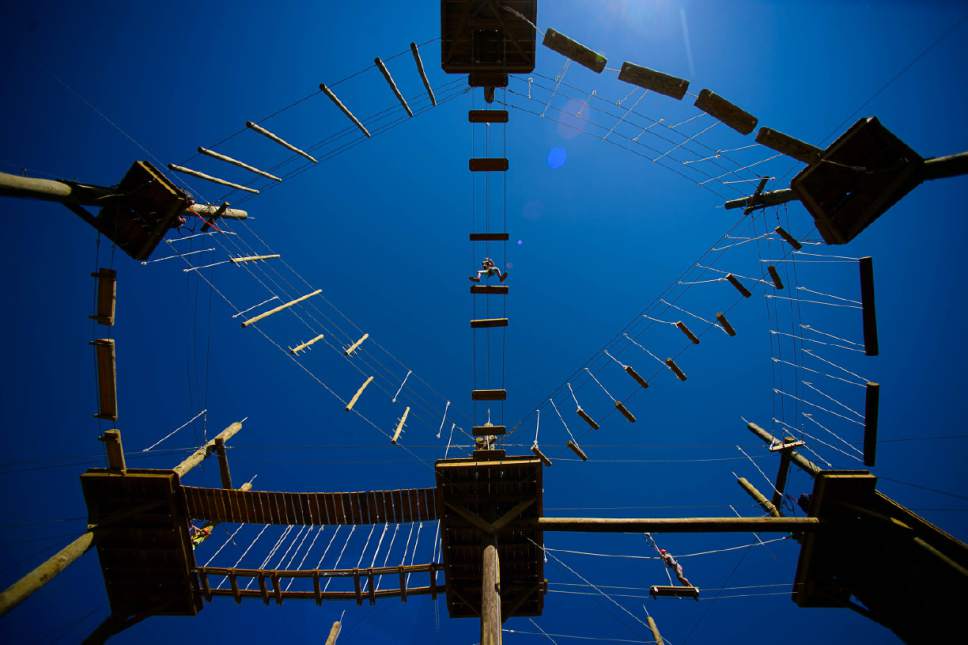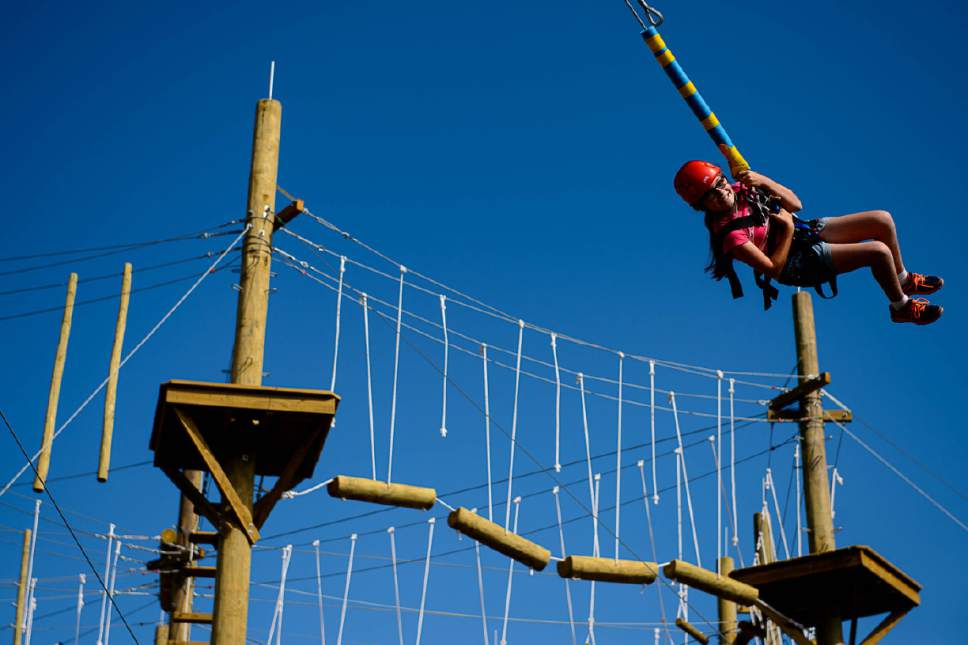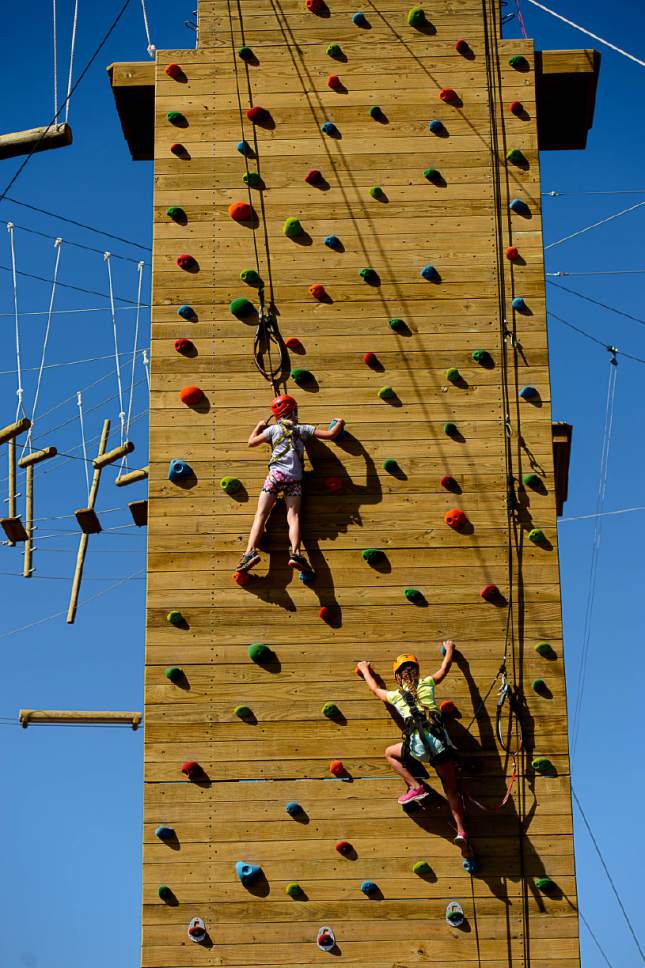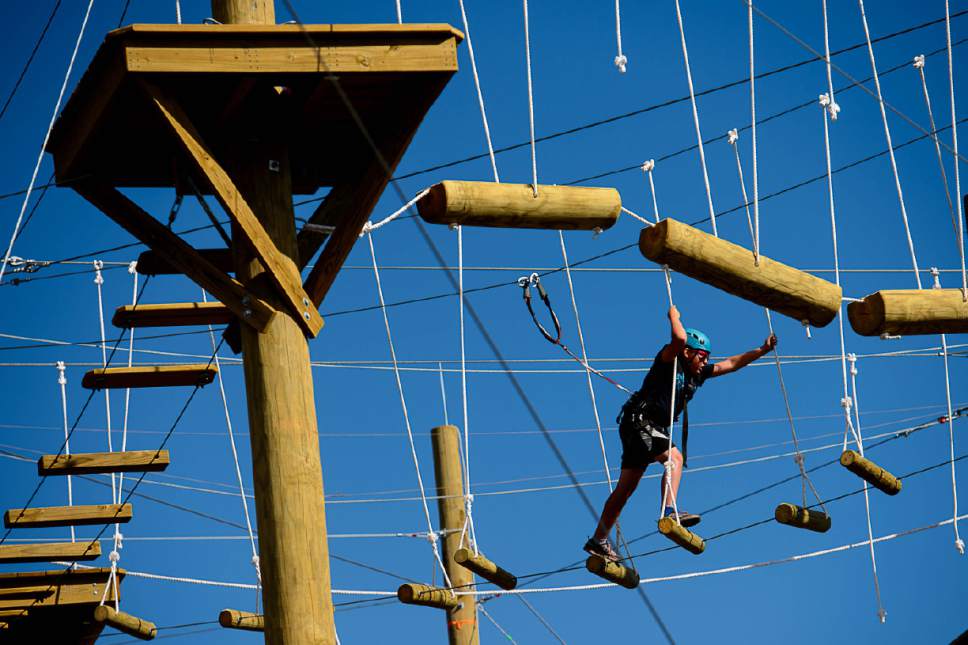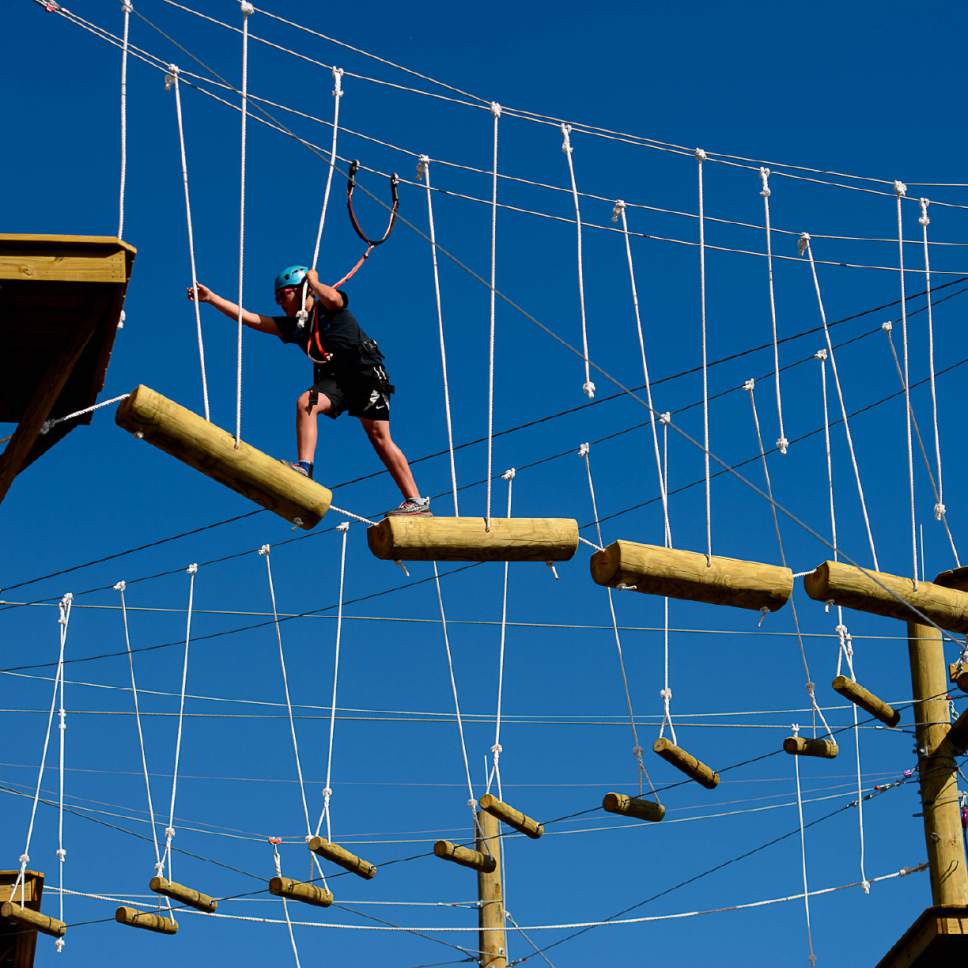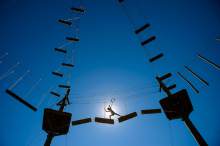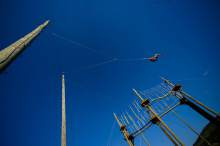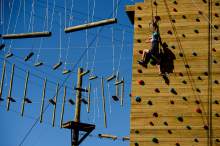This is an archived article that was published on sltrib.com in 2017, and information in the article may be outdated. It is provided only for personal research purposes and may not be reprinted.
Park City • It's unlikely that any of the kids with arthritis had a clue last week that the gregarious guy helping them into harnesses for a trip up the National Ability Center's expanded ropes course was an absolute mess 2½ years ago.
Post-traumatic stress disorder from two tours of duty in the Persian Gulf had left Tim Bates "a recluse, you might say," barely surviving in his hometown of New Orleans.
But a counselor at a Warrior Camp, a clinical treatment program that tries to heal military veterans' trauma and prevent suicides, suggested he travel to Utah to test some of the ways in which the National Ability Center helps people with disabilities rebuild their confidence and their lives.
Bates, who says he's "55 years young," hit pay dirt.
"This is life-changing headquarters," he said last week, flashing a big smile and bursting into infectious laughter as he joked with kids preparing for a ride on a giant swing, part of the new ropes course. "It took me a while to come out of my shell, but now there's no turning back."
Bates' transition exemplifies what the nonprofit National Ability Center has sought to accomplish since it opened in 1985.
Through a well-established skiing and snowboarding program, as well as providing chances to ride horses and run rivers, the center makes often inaccessible recreational opportunities available to about 5,500 people a year.
Many are veterans. But the center also attracts individuals with autism and people recovering from strokes. The number of visitors is almost certain to grow after the June 3 opening of the expanded ropes course on the center's property, off the Quinn Junction entrance to Park City.
With a cost close to $500,000, the structure created by Aerial Designs of Seattle has specially designed pulleys and harnesses that enable people in wheelchairs to test its challenges side by side with their able-bodied family members.
"Universal accessibility is the term we're using" to describe the course's primary asset, said Steve Robinson, the center's sports and recreation program manager.
A ropes course the center erected in 1999 was innovative for its time, he said, but only one of its features, an elevated suspension bridge, could be used by people in wheelchairs.
"It was time for an update," Robinson said.
Project funding came from private donors, such as Intermountain Healthcare, and a state agency, the Utah Office of Outdoor Recreation, which contributed $50,000.
"Our mission is to help people live the healthiest lives possible," said Mikelle Moore, Intermountain's senior vice president of community health. "We were looking beyond our own ability to deliver services through the hospital, seeking opportunities where we could make a difference. ... We were pretty compelled by their story and had the means to help."
Tom Adams, who runs the state Office of Outdoor Recreation, said it was easy to justify a matching grant for the center because it not only serves locals but also is an economic driver, enticing numerous out-of-staters to visit Utah for various programs.
"Many will stay here and see the sights when they're in town," he said.
Even more than that, Adams added, "what really stood out about the ropes course is that it's a facility for everyone. Everybody has some kind of limiting attribute. All of their limbs may work but they're terrified of heights, for example. They can get up there and learn a ton from the structure."
As a military veteran, Bates saw that in moving from being a center visitor to a staff member.
So did Noah Elliott, a St. Louis native who lost his left leg just above the knee to cancer when he was 17. Now, he is living in Park City and working at the center while training to become a member of the U.S. Paralympic snowboard team next February at the PyeongChang Winter Games in South Korea.
From his experiences with the ropes course, "you build more confidence and raise awareness in yourself of what you're capable of. It really changes the game and how you approach life. Everyone I've see go up and down the ropes course comes out a better person."
At the University of Utah, where Craig and AnnaBelle Bryan run the National Center for Veterans Studies, there is little doubt that outdoor recreation helps reduce suicide risks among individuals scarred by war.
The veterans center offers a free two-week program at the National Ability Center for military personnel with PTSD and their families.
"There's a lot of anecdotal information about people feeling great after outdoor recreation, and we wondered if somebody would get better if we took the [counseling] clinic to the person and did it in the great outdoors," said AnnaBelle Bryan, a sports psychologist and the veterans center's director of operations.
"Somewhere between day four and day six, you start noticing a complete turnaround in the veterans," she said. "You can tell they're getting better. You can see it in their faces. They're no longer trying to avoid people. On the ropes course, you have to work with other people and you cheer them on. It's interesting to watch that change."
Park City-based Jeff Steffen has seen that, too, in the veterans he has referred to the National Ability Center from Team Semper Fi, a veterans' assistance group.
"The ropes course specifically is a great team-building activity," he said. "It can help service members get over some of their scars . . . lets service members realize they can do more than they thought they could after their injury."
They may not know the horrors of war, but four dozen children with juvenile arthritis were learning those lessons last week while on a three-day camp at the center.
"This empowers them," said Katie Levine, an Arthritis Foundation staff member overseeing the adolescents as they rode a giant swing or, buckled in safely, walked precariously on logs or wires high above the ground.
"These kids have lived with a lot of 'noes' in their lives — 'no, you can't do this' or 'no, you can't do that,' " she said. "This [ropes course] allows them to see that, even with juvenile arthritis, there are so many things they can do and accomplish.
"Some of the kids are definitely intimidated," Levine added. "But with the encouragement of the staff here and their peers, they try things they probably never would. And you can see the satisfaction in their faces — their young smiley faces."


